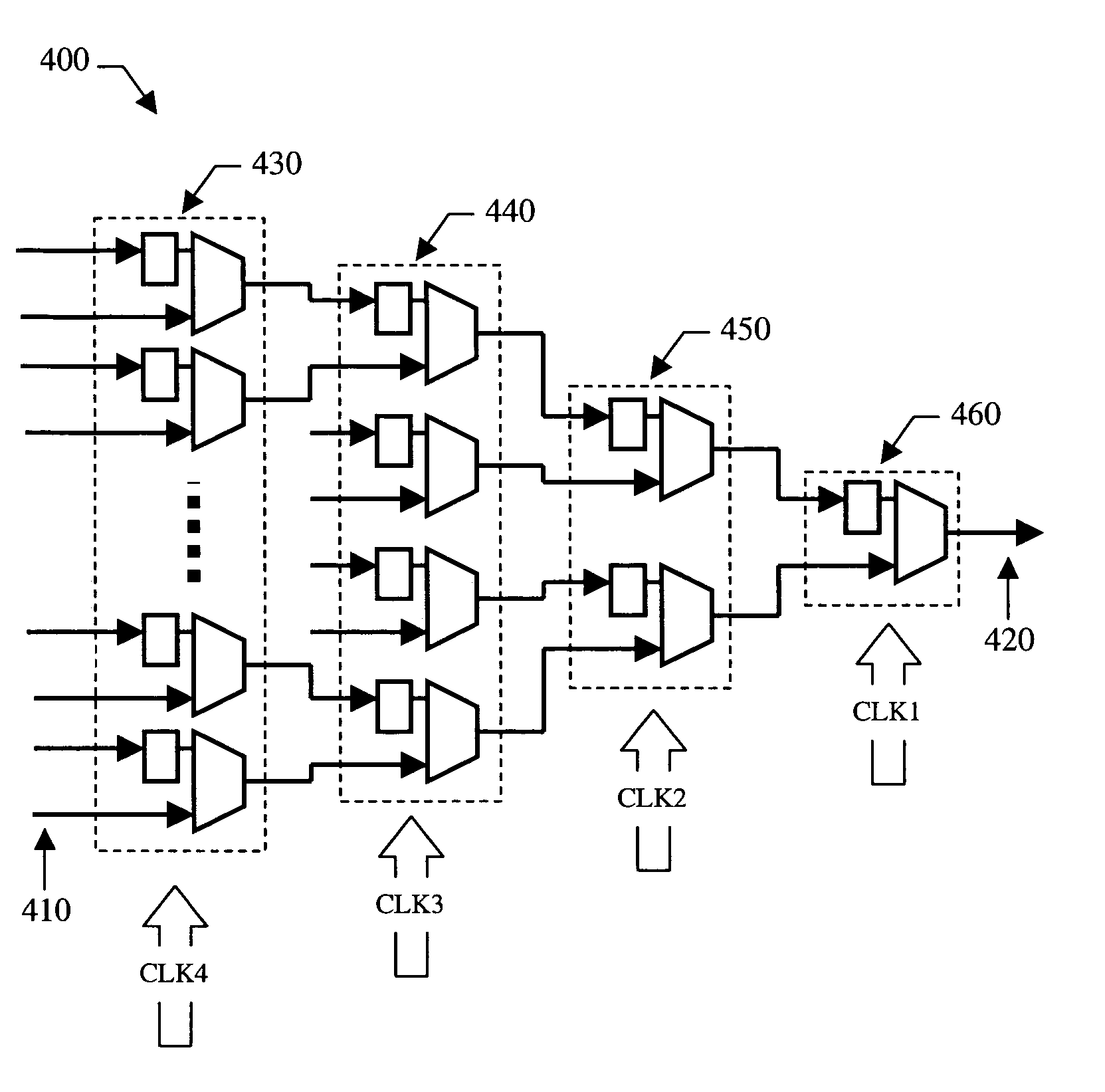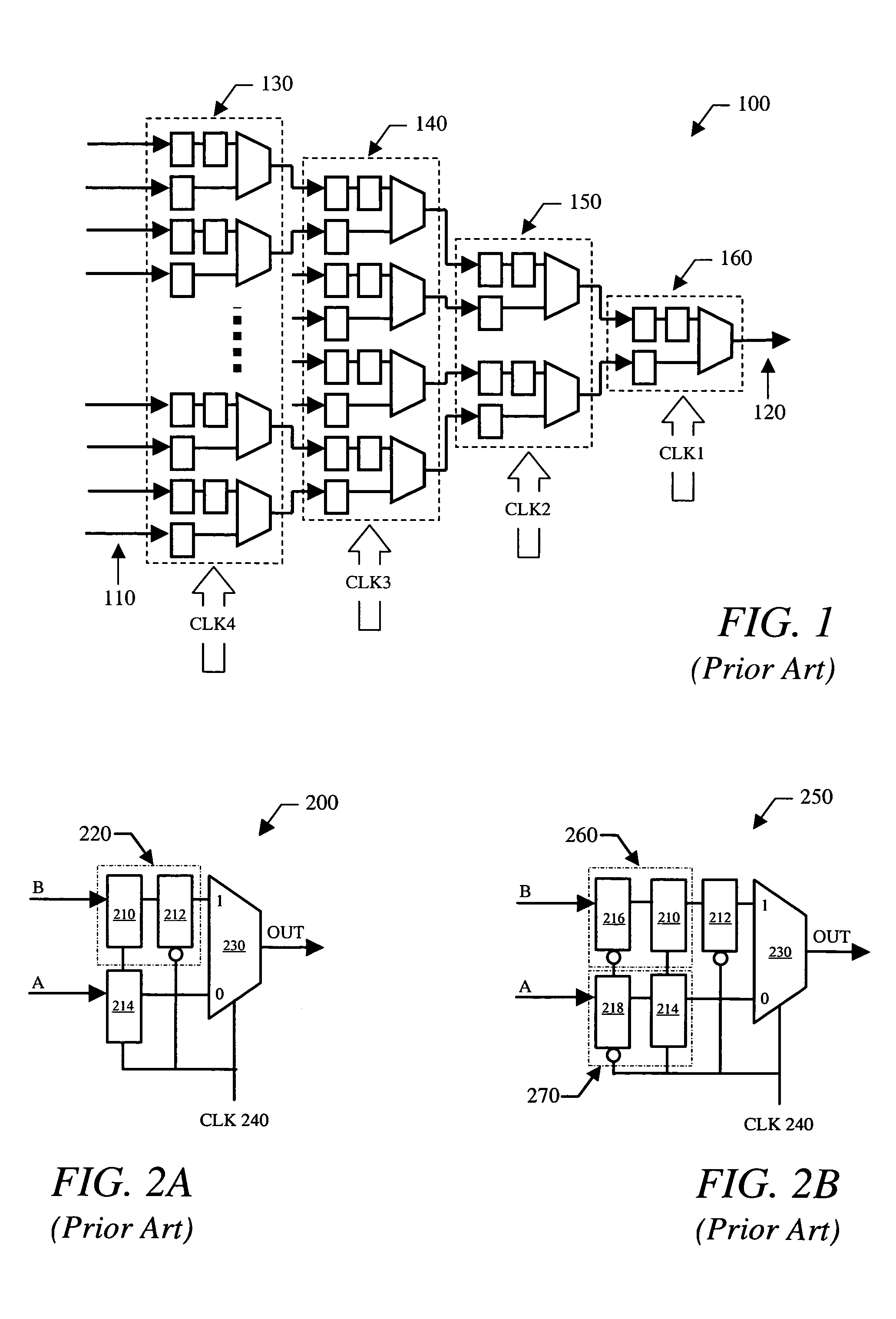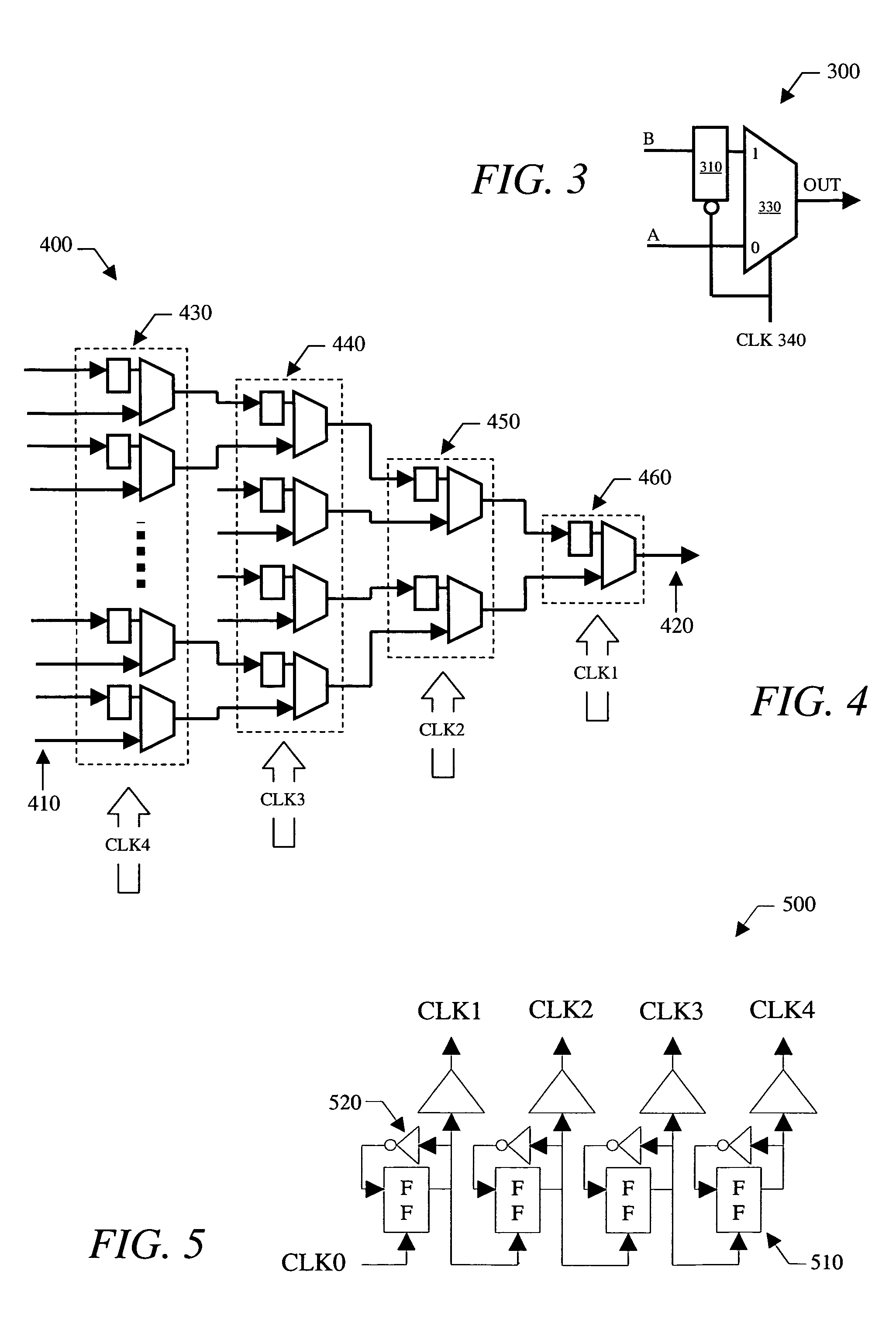Low power serializer circuit and method
a low-power serializer and circuit technology, applied in the field of electronic circuitry, can solve the problem that no latch may be coupled to the other input of the multiplexer
- Summary
- Abstract
- Description
- Claims
- Application Information
AI Technical Summary
Benefits of technology
Problems solved by technology
Method used
Image
Examples
Embodiment Construction
[0035]A pipelined serializer is, in principle, a “pipelined multiplexer” constructed from a “binary tree” of “registered multiplexer” building blocks to form a serializer core with log2(n) stages of pipelining, given an input word of length n. In general, pipelined serializers aim to reduce power consumption by reducing the number of circuit elements clocked at the “serial data rate,” or the speed at which a serial bitstream is transferred between transmitting and receiving components of a system. The serial data rate may also be referred to as the “bit transfer rate.” Pipelined serializers are typically constructed by arranging a plurality of multiplexing cells into stages, where each successive stage is clocked by a correspondingly faster clock rate. The opposite holds true for pipelined deserializers (i.e., each stage may be clocked by a successively slower clock rate). Since power efficiency tends to increase with decreasing speed, use of a pipelined serializer / deserializer gene...
PUM
 Login to View More
Login to View More Abstract
Description
Claims
Application Information
 Login to View More
Login to View More - R&D
- Intellectual Property
- Life Sciences
- Materials
- Tech Scout
- Unparalleled Data Quality
- Higher Quality Content
- 60% Fewer Hallucinations
Browse by: Latest US Patents, China's latest patents, Technical Efficacy Thesaurus, Application Domain, Technology Topic, Popular Technical Reports.
© 2025 PatSnap. All rights reserved.Legal|Privacy policy|Modern Slavery Act Transparency Statement|Sitemap|About US| Contact US: help@patsnap.com



